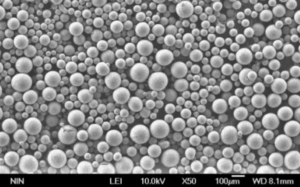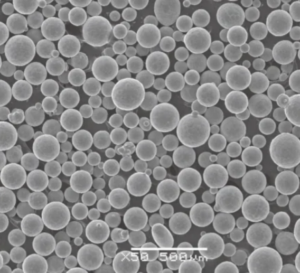مسحوق سبائك التصلب الملبد بطل مجهول في عالم علوم المواد. تجمع هذه الأعجوبة الهندسية بين مزايا التلبيد - وهي طريقة تُستخدم لإنشاء هياكل صلبة من المساحيق - والمزايا الإضافية لعمليات التصلب. ويخلق هذا المزيج الفريد من نوعه مادة ليست قوية ومتينة فحسب، بل يسهل إنتاجها أيضًا وتكون أكثر فعالية من حيث التكلفة مقارنة بالطرق التقليدية. سواءً كنت عالم مواد أو مهندسًا أو مجرد قارئ فضولي، سيتعمق هذا الدليل في تعقيدات مساحيق السبائك المتصلبة بالتلبيد ويقدم نظرة شاملة على ما يجعل هذه المواد مميزة للغاية.
نظرة عامة على مسحوق سبائك التلبيد المتصلب
مساحيق سبائك التلبيد المتصلدة عبارة عن مساحيق معدنية متخصصة مصممة للخضوع للتصلب أثناء عملية التلبيد نفسها. وتلغي هذه الوظيفة المزدوجة الحاجة إلى المعالجة الحرارية الإضافية، مما يقلل من وقت الإنتاج والتكاليف مع إنتاج مكونات ذات قوة عالية ومقاومة للتآكل. تُستخدم هذه المساحيق في الغالب في تصنيع الأجزاء عالية الأداء في صناعات السيارات والفضاء والأدوات.
أبرز الملامح الرئيسية:
- تطبيقات متعددة الاستخدامات: من تروس السيارات إلى مكونات الطيران، تُستخدم مساحيق سبائك التلبيد المتصلدة في مختلف الصناعات.
- الإنتاج الفعال من حيث التكلفة: تجمع عملية التلبيد والتصلب بين التلبيد والتصلب، مما يقلل من الحاجة إلى خطوات معالجة إضافية.
- الخصائص عالية الأداء: توفر هذه المساحيق خصائص ميكانيكية استثنائية، بما في ذلك القوة والمتانة ومقاومة التآكل.

تكوين مسحوق سبائك التلبيد المتصلب
تعتبر تركيبة مساحيق سبائك التلبيد المتصلدة أمرًا بالغ الأهمية لأدائها. وتتكون هذه المساحيق عادةً من معدن أساسي، مثل الحديد، ممزوجًا بعناصر السبائك التي تعزز التصلب أثناء عملية التلبيد. تتم موازنة اختيار هذه العناصر وتركيزاتها بعناية لتحقيق الخواص الميكانيكية المطلوبة.
| نموذج المسحوق المعدني | التركيب | عناصر السبائك الأولية | الخصائص البارزة |
|---|---|---|---|
| SH-42 | ذات أساس حديدي | النيكل، الموليبدينوم | صلابة عالية، مقاومة للتآكل |
| SH-55 | أساسه النحاس | نيكل، كروم | مقاومة ممتازة للتآكل |
| SH-62 | ذات أساس حديدي | الكربون، المنجنيز | تحسين الصلابة والقوة |
| SH-78 | الفولاذ المقاوم للصدأ | الكروم، النيكل | مقاومة عالية للتآكل، صلابة جيدة |
| SH-81 | ذات أساس حديدي | الكروم، الموليبدينوم | مقاومة فائقة للتآكل والصلابة |
| SH-94 | النيكل | الموليبدينوم، البورون | قوة عالية في درجات الحرارة المرتفعة |
| SH-100 | أساسه التيتانيوم | الألومنيوم، الفاناديوم | خفيفة الوزن ونسبة قوة إلى الوزن ممتازة |
| SH-120 | ذات أساس حديدي | السيليكون، المنجنيز | صلابة وقابلية تصنيع معززة |
| SH-130 | أساسه النحاس | القصدير، الزنك | موصلية جيدة، قوة معتدلة |
| SH-145 | ذات أساس حديدي | الكربون، السيليكون | تعزيز الصلابة وتقليل الهشاشة |
صُممت كل من هذه المساحيق لتلبية متطلبات محددة، سواء كانت مقاومة عالية للتآكل أو صلابة محسنة أو مقاومة فائقة للتآكل.
خصائص مسحوق سبائك التصلب الملبد
إن خصائص مساحيق سبائك التلبيد والتصلب هي ما يجعلها ذات قيمة كبيرة في التطبيقات الصناعية. وتجمع هذه المساحيق بين مزايا كل من التلبيد والتصلب في عملية واحدة، مما ينتج عنه مواد قوية ومقاومة للتآكل بشكل استثنائي.
الخواص الميكانيكية:
- القوة: تنتج مساحيق التصلب الملبد مكونات ذات قوة شد وضغط عالية، مما يجعلها مناسبة للتطبيقات الحاملة.
- الصلابة: توفر هذه المساحيق صلابة ممتازة، مما يسمح للمادة بامتصاص الطاقة ومقاومة الكسر.
- مقاومة التآكل: تساهم عناصر التصلب داخل هذه المساحيق في مقاومة التآكل الفائقة، مما يطيل من عمر المكونات.
الخواص الفيزيائية:
- الكثافة: عادةً ما تحقق مساحيق التلبيد المتصلب كثافة عالية، مما يساهم في قوتها الميكانيكية.
- المسامية: يمكن التحكم في عملية التلبيد لتقليل المسامية، مما ينتج عنه مواد ذات بنية أكثر اتساقًا وخصائص ميكانيكية أفضل.
الخواص الحرارية:
- مقاومة الحرارة: تظهر بعض مساحيق التلبيد المتصلبة، خاصةً تلك القائمة على النيكل أو التيتانيوم، مقاومة ممتازة للحرارة، وتحافظ على خواصها الميكانيكية في درجات الحرارة المرتفعة.
- التوصيل الحراري: اعتمادًا على المعدن الأساسي، يمكن أن توفر هذه المساحيق توصيلًا حراريًا جيدًا، وهو أمر مفيد في التطبيقات التي تتطلب تبديد الحرارة.
مزايا مسحوق سبائك التلبيد المتصلب
توفر مساحيق السبائك المتصلدة الملبدة مجموعة من المزايا التي تجعلها المادة المفضلة لمختلف التطبيقات عالية الأداء.
كفاءة التكلفة:
- خطوات المعالجة المخفضة: إن الجمع بين التلبيد والتصلب في خطوة واحدة يقلل من الحاجة إلى معالجات حرارية إضافية، مما يوفر الوقت والمال.
- استهلاك أقل للطاقة: تستهلك عملية التلبيد والتصلب المتكاملة طاقة أقل مقارنة بالطرق التقليدية التي تتطلب خطوات تلبيد وتصلب منفصلة.
أداء محسّن:
- تحسين الخواص الميكانيكية: تُظهر المكونات المصنوعة من مساحيق التلبيد المتصلب قوة وصلابة ومقاومة تآكل فائقة مقارنة بتلك المصنوعة من المواد الملبدة التقليدية.
- جودة متسقة: تضمن التركيبة الخاضعة للرقابة والتوزيع الموحد لعناصر السبائك اتساق الجودة والأداء عبر دفعات مختلفة.
تعدد الاستخدامات:
- مجموعة واسعة من التطبيقات: من قطع غيار السيارات إلى مكونات الطيران، يمكن استخدام مساحيق التلبيد المتصلدة في مجموعة متنوعة من التطبيقات، مما يجعلها متعددة الاستخدامات للغاية.
- التخصيص: يمكن تكييف هذه المساحيق لتلبية متطلبات محددة من خلال تعديل التركيب ومعلمات المعالجة.
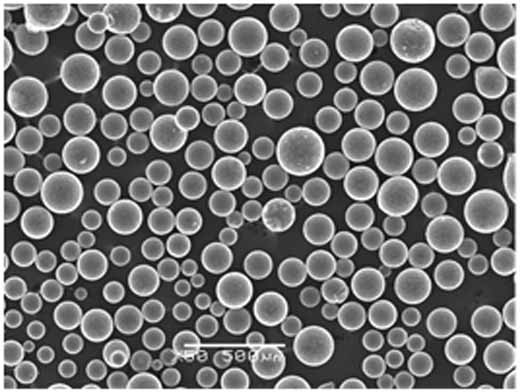
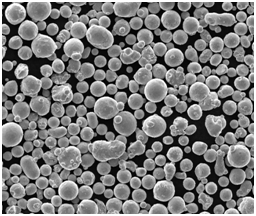
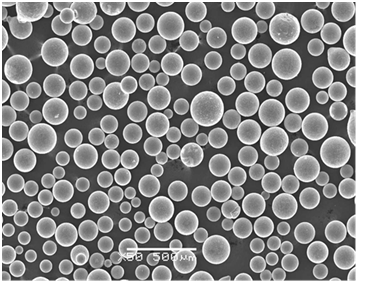
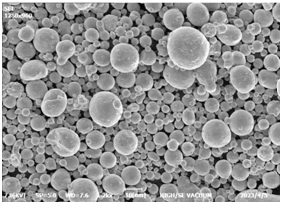
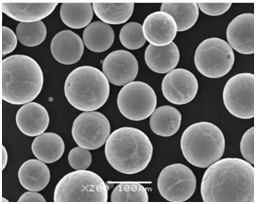
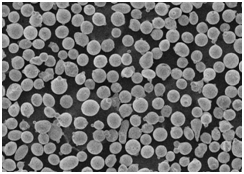
تطبيقات مساحيق سبائك التلبيد المتصلب
تُستخدم مساحيق السبائك المتصلدة الملبدة في مجموعة واسعة من التطبيقات نظرًا لخصائصها الميكانيكية الاستثنائية وفعاليتها من حيث التكلفة.
| الصناعة | التطبيقات الشائعة | المزايا |
|---|---|---|
| السيارات | التروس، ومكونات ناقل الحركة، وأجزاء المحرك | قوة عالية، ومقاومة للتآكل، وإنتاج فعال من حيث التكلفة |
| الفضاء | شفرات التوربينات، والمكونات الهيكلية | خفيف الوزن ومقاوم للحرارة العالية |
| الأدوات | أدوات القطع والقوالب والقوالب والقوالب | صلابة فائقة وعمر افتراضي طويل للأداة |
| الإلكترونيات | المشتتات الحرارية، والموصلات | موصلية حرارية جيدة، ومقاومة للتآكل |
| الطبية | الغرسات والأدوات الجراحية | التوافق الحيوي، والمتانة، ومقاومة التآكل |
| النفط والغاز | لقم الثقب والصمامات وموانع التسرب | مقاومة عالية للتآكل، ومقاومة عالية للتآكل |
| السلع الاستهلاكية | الساعات والمجوهرات والأجهزة الراقية | الجاذبية الجمالية والمتانة |
| الآلات الصناعية | المحامل والتروس والمثبتات | قدرة تحميل عالية، ومقاومة للتآكل |
| الدفاع | الدروع ومكونات الأسلحة | قوة عالية، ومقاومة الصدمات |
| الطاقة | خلايا الوقود ومكونات البطارية | كفاءة عالية ودورة حياة طويلة |
تسلط هذه التطبيقات الضوء على تعدد استخدامات مساحيق سبائك التلبيد المتصلدة وأدائها في مختلف الصناعات.
المواصفات والأحجام والدرجات والمعايير
عند اختيار مساحيق سبائك التلبيد المتصلبة، من المهم مراعاة المواصفات والأحجام والدرجات والمعايير التي تنطبق على تطبيقك المحدد.
| نموذج المسحوق المعدني | نطاق حجم الجسيمات (ميكرومتر) | الصف | الامتثال القياسي |
|---|---|---|---|
| SH-42 | 10-50 | A2 | أستم B783, MPIF 35 |
| SH-55 | 15-45 | B3 | ISO 5755، DIN 3572 |
| SH-62 | 20-60 | A1 | astm b783، ISO 4499 |
| SH-78 | 5-30 | C1 | أستم B243، MPIF 35 |
| SH-81 | 25-70 | B1 | ISO 4499، DIN 30910، ISO 4499، DIN 30910 |
| SH-94 | 15-45 | A3 | أستم B312، MPIF 35 |
| SH-100 | 10-40 | C2 | أيزو 5755، أيزو 5755، أستم B312 |
| SH-120 | 10-50 | A2 | MPIF 35، DIN 30910 |
| SH-130 | 20-60 | B2 | أيزو 5755، أيزو 5755، أستم B243 |
| SH-145 | 15-55 | C1 | أستم B243، ISO 5755، ISO 5755 |
يعد اختيار الدرجة والمعيار المناسبين أمرًا بالغ الأهمية لضمان استيفاء المادة لمعايير الأداء اللازمة للاستخدام الخاص بك.
تفاصيل الموردين والأسعار
فهم السوق لـ مساحيق سبائك التلبيد المتصلبة يمكن أن تساعدك على اتخاذ قرارات شراء مستنيرة. فيما يلي بعض الموردين الرئيسيين ومعلومات عامة عن أسعار هذه المساحيق.
| المورد | الموقع | نموذج المسحوق المعدني | نطاق السعر (لكل كيلوغرام) | وقت التسليم |
|---|---|---|---|---|
| المساحيق المعدنية المتقدمة | الولايات المتحدة الأمريكية | SH-42، SH-55 | $20 – $50 | 2-4 أسابيع |
| Global Powders Ltd. | المملكة المتحدة | SH-62، SH-78 | $25 – $60 | من 3 إلى 6 أسابيع |
| الحلول المعدنية | ألمانيا | SH-81، SH-94 | $30 – $70 | 4-8 أسابيع |
| باودر تك | الصين | SH-100، SH-120 | $15 – $40 | 3-5 أسابيع |
| السبائك الشرقية | اليابان | SH-130، SH-145 | $35 – $75 | 2-5 أسابيع |
قد تختلف الأسعار حسب المورد، والكمية المطلوبة، والمتطلبات المحددة للاستخدام الخاص بك.
إيجابيات وسلبيات مسحوق سبائك التلبيد المتصلب
في حين أن مساحيق سبائك التلبيد المتصلدة تقدم العديد من المزايا، إلا أنها تأتي أيضًا مع بعض القيود. ويمكن أن يساعدك فهمها على اتخاذ القرار الأفضل لاحتياجاتك الخاصة.
| أسبكت | مزايا | محددات |
|---|---|---|
| عملية الإنتاج | يجمع بين التلبيد والتصلب، مما يقلل من خطوات الإنتاج | يتطلب تحكمًا دقيقًا في ظروف التلبيد |
| التكلفة | انخفاض التكلفة الإجمالية بسبب انخفاض خطوات المعالجة | يمكن أن يكون الاستثمار الأولي في معدات التلبيد مرتفعًا |
| الخواص الميكانيكية | قوة عالية، ومقاومة التآكل، والمتانة | تقتصر على تركيبات سبائك محددة |
| تعدد الاستخدامات | مناسبة لمجموعة واسعة من التطبيقات | قد لا تكون مناسبة لجميع الاستخدامات ذات درجات الحرارة العالية |
| التخصيص | يمكن تصميمها حسب متطلبات محددة | يمكن أن تكون المساحيق المخصصة أغلى من الدرجات القياسية |
| كفاءة الطاقة | استهلاك أقل للطاقة بسبب العملية المدمجة | قد لا تحقق نفس خصائص المواد المقواة بشكل منفصل |
توضح هذه المزايا والعيوب المفاضلات التي ينطوي عليها استخدام مساحيق سبائك التلبيد المتصلبة، مما يساعدك على اتخاذ قرار مستنير بناءً على متطلباتك الخاصة.
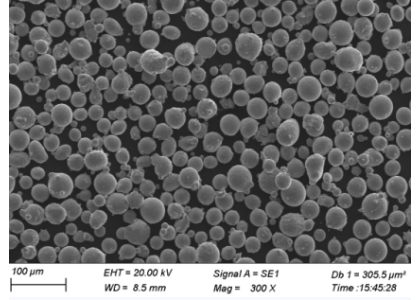
التعليمات
في الختام، إليك بعض الأسئلة المتداولة حول مساحيق سبائك التلبيد المتصلبة، مقدمة في شكل جدول مناسب للرجوع إليها بسرعة.
| سؤال | الإجابة |
|---|---|
| ما هو مسحوق سبيكة التلبيد المتصلب؟ | مسحوق سبيكة التلبيد المتصلب عبارة عن مسحوق معدني مصمم للخضوع للتصلب أثناء عملية التلبيد، مما يلغي الحاجة إلى معالجة حرارية إضافية. |
| ما هي الفوائد الرئيسية لاستخدام مساحيق التلبيد المتصلب؟ | فهي توفر إنتاجاً فعالاً من حيث التكلفة، وقوة عالية، ومقاومة للتآكل، ويمكن تصميمها لتناسب تطبيقات محددة. |
| في أي الصناعات يشيع استخدام مساحيق التلبيد المتصلب؟ | صناعات السيارات، والفضاء، والأدوات، والإلكترونيات، والطب، والنفط والغاز، والسلع الاستهلاكية. |
| كيف يختلف التلبيد بالتصلب عن التلبيد التقليدي؟ | يجمع التلبيد بالتصلب بين التلبيد والتصلب في خطوة واحدة، مما يقلل من وقت الإنتاج ويحسن خصائص المواد. |
| هل يمكن تخصيص مساحيق التلبيد المتصلب؟ | نعم، يمكن تكييفها من خلال تعديل التركيب ومعلمات المعالجة لتلبية متطلبات الاستخدام المحددة. |
| ما هي قيود مساحيق سبائك التلبيد المتصلدة؟ | قد تتطلب تحكمًا دقيقًا في ظروف التلبيد وقد لا تكون مناسبة لجميع التطبيقات ذات درجات الحرارة العالية. |
| كيف تقارن تكلفة مساحيق التلبيد المتصلب بالمساحيق التقليدية؟ | يمكن أن تكون مساحيق التلبيد المتصلب أكثر فعالية من حيث التكلفة بسبب انخفاض خطوات المعالجة، ولكن الاستثمار الأولي في المعدات يمكن أن يكون مرتفعًا. |
| هل مساحيق التلبيد المتصلدة صديقة للبيئة؟ | يمكن أن تكون أكثر كفاءة في استخدام الطاقة بسبب العملية المشتركة، مما يقلل من التأثير البيئي الكلي للإنتاج. |
| ما هي بعض نماذج المساحيق المعدنية الشائعة المتوفرة؟ | تشمل الأمثلة SH-42 و SH-55 و SH-62 و SH-78 و SH-81 و SH-94 و SH-100 و SH-120 و SH-130 و SH-145. |
| أين يمكنني شراء مساحيق سبائك التلبيد المتصلدة؟ | يمكن شراء مساحيق التصلب الملبد من موردين مثل Advanced Metal Powders وGlobal Powders Ltd. وPowderTech. |
خاتمة
مساحيق السبائك المتصلدة الملبدة تمثل تقدمًا كبيرًا في علم المواد، حيث تقدم مزيجًا فريدًا من القوة والمتانة والفعالية من حيث التكلفة. وسواء كنت تقوم بتطوير مكونات سيارات عالية الأداء أو أجزاء فضائية متطورة، توفر هذه المساحيق حلاً متعدد الاستخدامات وموثوقًا به. من خلال فهم تركيبة مساحيق سبائك التلبيد المتصلدة وخصائصها ومزاياها وتطبيقاتها، يمكنك اتخاذ قرارات مستنيرة تساعدك على تحسين عمليات الإنتاج وتحقيق نتائج فائقة.
